Interest in measuring heart rate variability (HRV) as a noninvasive assessment of the autonomic nervous system has grown over the years, with increasing ease and accuracy of monitoring HRV through consumer friendly wearable devices. There are many available options when it comes to HRV wearable devices, but what are the pros and cons of these different modes of measurement? Is one more accurate than the other?
After all, when it comes to measuring HRV, accuracy of data is of paramount importance since you’re using this information to understand and improve your physical and mental health. Below, we discuss the pros and cons of the two most common modes of measuring HRV.
How is HRV measured?
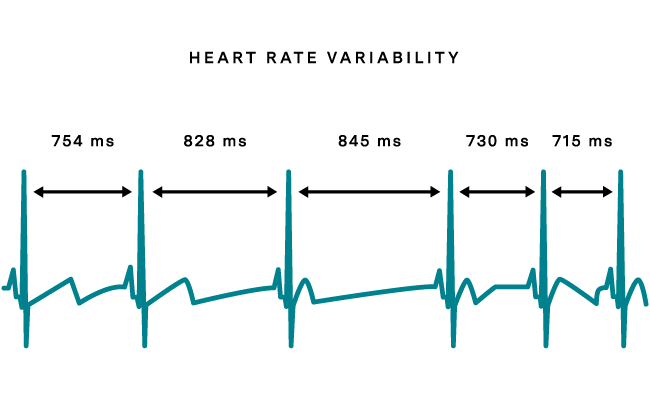
HRV, defined as the time interval between consecutive heartbeats measured in milliseconds, is most commonly measured with either electrocardiography (ECG or EKG) or photoplethysmography (PPG) technology. We describe each of these below.
Electrocardiography devices (e.g., patch, chest strap)
ECG technology, considered the gold standard when it comes to measuring heart rate, uses an electrical voltage signal produced by heart activity to measure HRV. Our nerve and muscle cells communicate with each other using electrical and chemical signals, which also control our heartbeat. This electrical wave throughout our body can be measured on the surface of our skin using electrodes with gel, which help conduct readings of the electrical signals.
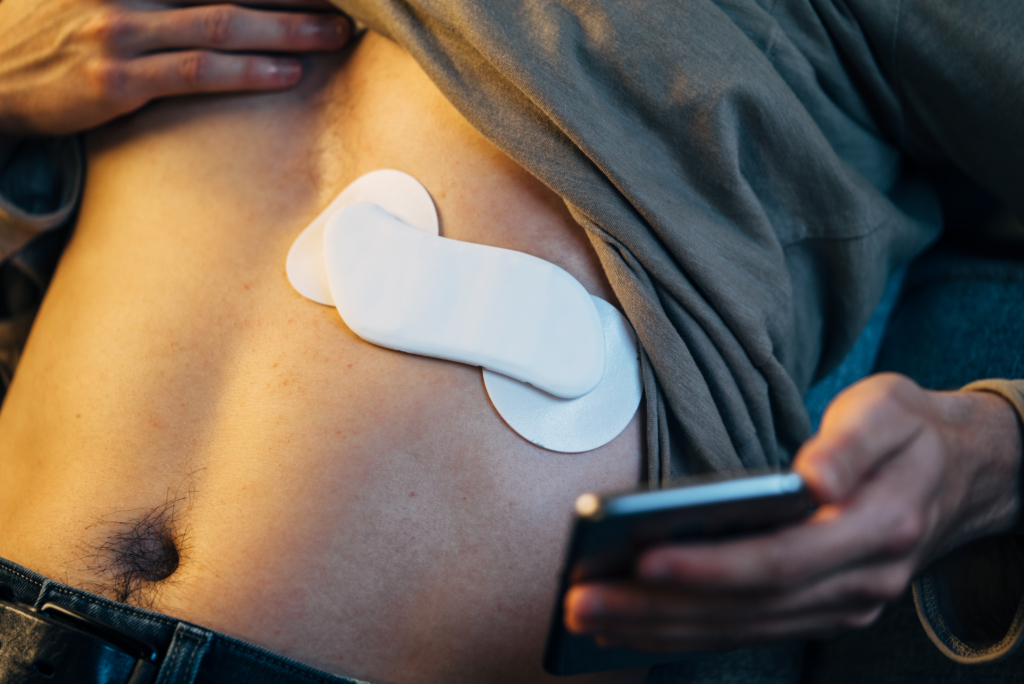
Note that no electricity is sent into the body in order to conduct these readings. Rather, ECG devices measure changes in voltage on different areas of the skin and plot them on a graph. Thus, an electrocardiograph is literally a visual representation of the electrical signals originating from our heart.
Photoplethysmography devices (e.g., watch, ring, finger clip, ear clip)
In contrast, PPG technology uses lights and sensors to measure blood volume changes in our cardiovascular system, especially the veins and capillaries under our skin. To measure heart rate using PPG technology, an LED shines a constant light onto our skin, some of which is reflected and scattered back into a semiconductor device that converts light into an electrical current, called a photodiode.
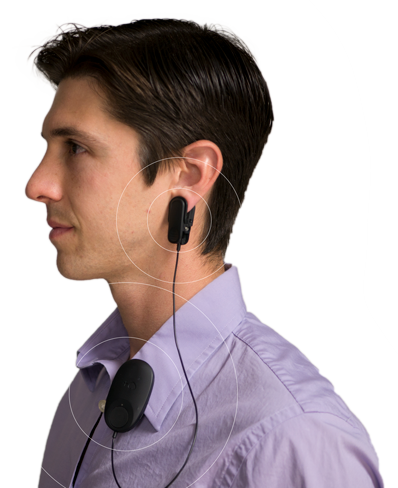
As our heart beats and sends a pulse throughout our cardiovascular system, the amount of light that reaches the photodiode changes due to pressure changes. Photoplethysmography technology tracks these changes in light and the time between pulses to determine our heart rate.
What are the benefits of ECG vs. PPG-based measurements?
ECG technology is considered the gold standard when measuring HRV. Unlike PPG, which is an indirect method, ECG records the heart’s electrical activity at its source, which makes it more reliably accurate at the millisecond level. ECG technology enables heart rate to be measured accurately on a beat by beat basis, so that meaningful HRV data can be obtained with short-duration measurements. The primary limitation is that ECG readings must be conducted close to the heart, which doesn’t allow for a diverse range of wearable devices other than a patch or a strap worn on the chest.

In contrast, PPG technology can theoretically be taken anywhere from the body (e.g., the wrist, finger, earlobe, temple, etc.), allowing for more flexibility in terms of types of wearable devices. Since individuals are generally more familiar with the idea of wearing a watch-like device (e.g., FitBit, Apple Watch), this could be a shortcut decision-making factor for some.
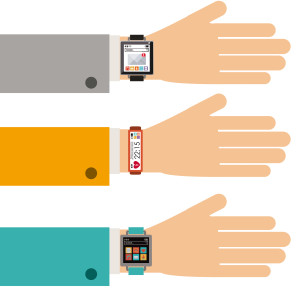
The limitations of PPG based measurements
However, the limitations of PPG technology are significant. PPG is accurate for measuring HRV in healthy individuals who are at rest, but quickly loses accuracy when any physical activity is introduced. Thus, in order to be accurate, PPG measurements must ideally be taken overnight while the wearer is asleep. This significantly limits access to a more holistic picture of one’s HRV data, and prevents wearers from tracking how different activities throughout the day impact their HRV.
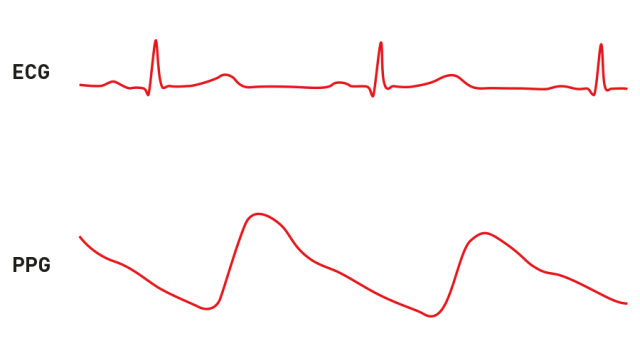
Furthermore, PPG technology is more likely to be missing data. This is because PPG sensors require a relatively long settling time due to the need for cancelling the effects of ambient light, accommodating different skin conditions and colors, and dealing with motion artifacts. Additionally, PPG can only be used on parts of the body that have a high concentration of blood vessels, making it challenging to get a reliable PPG signal from certain parts of the body, like the wrist.
For example, a study found that around 10% of beats could not be detected by the Apple Watch in both the relax and stress stages. This would not be so problematic if they were isolated beats, but they tended to be consecutive beats, which resulted in significant gaps in the data.
Due to these limitations, using PPG technology to measure HRV can result in missing important information that could help individuals improve their mental and physical health.
Which HRV wearable should you try?
The answer to this question depends on the context in which you plan to use your HRV wearable device. If you only want to measure HRV while sleeping, a ring or watch may suffice, since you will be in a highly predictable environment, where you will be engaging in consistent respiration in a supine position.
However, if you’d like more detailed, extensive, accurate heart rate variability data throughout the day, a wearable device that uses ECG technology, like the Lief Smart Patch, is the optimal route. If you value having access to both types of measurements, you may opt for wearing your ECG device during the day, and a PPG device while you sleep (that is, if you prefer wearing a ring or watch to bed instead of a patch or strap).
How does the Lief Smart Patch stand out from other HRV wearable devices?

The ECG-based Lief Smart Patch stands out from other HRV wearable devices in 3 key ways by offering:
- HRV readings with clinical-grade accuracy, which is supported by Lief’s designation as an FDA Class II medical device covered by many insurance plans in the U.S.
- A completely discreet wearable device that can be worn continuously throughout the day – unlike a noticeable fitness band, ring, or ear clip, the Lief Smart Patch is worn on the torso, covered by clothing, allowing individuals to unobtrusively engage with their Lief device at work and in social settings
- Automatic, personalized HRV biofeedback practice throughout the day that proactively helps modulate the wearer’s autonomic nervous system. Not only does Lief monitor HRV in real time, it actively helps wearers increase their HRV whenever it starts to dip below the target threshold for that week
There are a variety of HRV wearable devices on the market these days, each with its own advantages and disadvantages. Knowing whether you want access to highly accurate data displayed in real time throughout the day to help you become more aware of your triggers for stress, an accessory to track your HRV while sleeping — or perhaps both — will be key to making the decision that fits your unique needs best.




Leave a Reply
You must be logged in to post a comment.